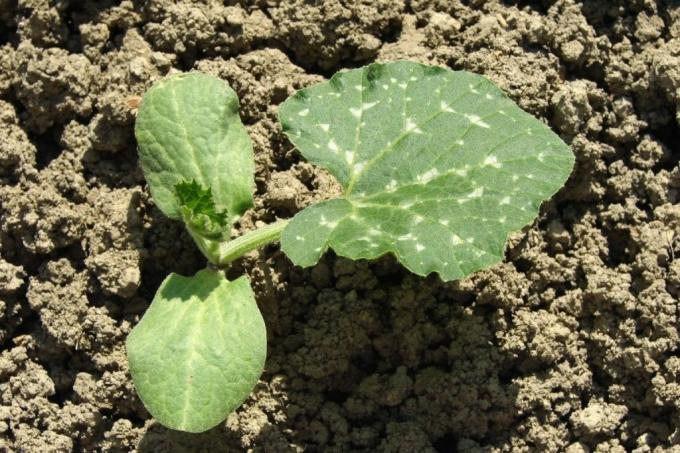
table of contents
- Advantages of preferring
- material
- time
- temperature
- instructions
- Prefer pumpkin - alternative
- Isolate the pumpkin plants
- frequently asked Questions
Pumpkins are easy to grow in your own garden. They grow even better if they are brought forward in good time. How to choose pumpkin correctly is in this article.
In a nutshell
- Preferring pumpkin from seeds is quite easy
- One plant per pot makes pricking out superfluous
- Germination time only a few days
- from May, young plants can go outdoors
Advantages of preferring
Pumpkin plants are not frost hardy and only grow well when the weather is warm enough. That is why they are usually preferred in the house. Moving forward gives the plants a head start in growth compared to direct sowing. They are also more robust against pests and adverse weather conditions.
material
- Seeds of the desired type of pumpkin
- Plant pots (10 cm)
- Cultivation soil or other substrate
- some kitchen paper
- Water (preferably in a spray bottle)
- Cling film, a freezer bag, etc. Ä. (alternatively a greenhouse)
Note: If pots with a diameter of 10 cm are used straight away, the young plants do not need to be repotted again.

time
The best time to prefer pumpkin is in mid-April. It doesn't really make sense because the young plants will then grow poorly. They need a lot of light after germination and the strength of the sunlight is not sufficient earlier in the year.
temperature
The right temperature is essential for a good germination result. The pumpkin likes it warm, but does not need it to be particularly bright to germinate. 25 degrees or normal room temperature are enough. A very good place to let heat-loving seeds germinate is the cover of an aquarium, provided that it is still lit with tubes that develop heat.
instructions
- Pumpkin seeds can, but do not have to, be pretreated. Usually it is enough to let them soak in water for 24 hours.
- You can plant each seed in a separate pot to save yourself the hassle of pricking.
- Place a sheet of paper towel in the pots to cover the drainage holes. This prevents the earth from falling out. Later the kitchen paper will rot completely.
- Pour soil into the pots. Leave 2 to 3 cm free to the edge.
- Moisten the earth. To do this, pour water until it runs out of the pot.
- Place the seed or seeds on the substrate, press down a little and cover with more soil.
- Now moisten the upper layer of soil again. Better to use a spray bottle for this.
- Germination is faster if the pots are covered with foil. Use either cling film or a freezer bag. Simply put the latter over the pots.
- Put the pots in a warm place. Light is only necessary when the cotyledons are visible.

Prefer pumpkin - alternative
A particularly good germination climate is achieved in a mini greenhouse. It is filled with soil, the seeds sown and then the soil is kept moist. Place the greenhouse in a bright, not too sunny place, otherwise it will quickly get too hot. As long as the seeds are germinating, there is no need to ventilate it. After that, the ventilation makes it easier for the plants to breathe.
Note: Do not water too much in the greenhouse; excess water cannot run away.
Isolate the pumpkin plants
The cotyledons become visible after about 7 days. If several seeds have been sown in one pot, it is essential to separate them later.
- Pull out very weak plants together with their roots and discard them.
- Carefully remove the strong plants from the earth with your finger or a special prick stick. Treat the young roots very carefully.
- Plant the young plants fresh in slightly larger pots and then place them in a light and slightly cooler place.
- Water regularly, possibly even fertilize a little, especially with poor potting soil. Don't forget to harden before planting out.

frequently asked Questions
This is theoretically possible, but will rarely lead to the desired success. Most pumpkin varieties are hybrid varieties that are not seed-proof. So they pass on their traits indiscriminately to their offspring. So collecting seeds is only worthwhile for special non-seed varieties.
Pumpkins can also be sown directly in mid to late May. Then, although they don't have a head start in growth, they usually succeed anyway. The pumpkins may not be quite as big as those of the pre-grown plants.
Special potting soil is available in stores. This has some advantages over normal garden soil, but it is not absolutely necessary. Seeds germinate in every soil.



